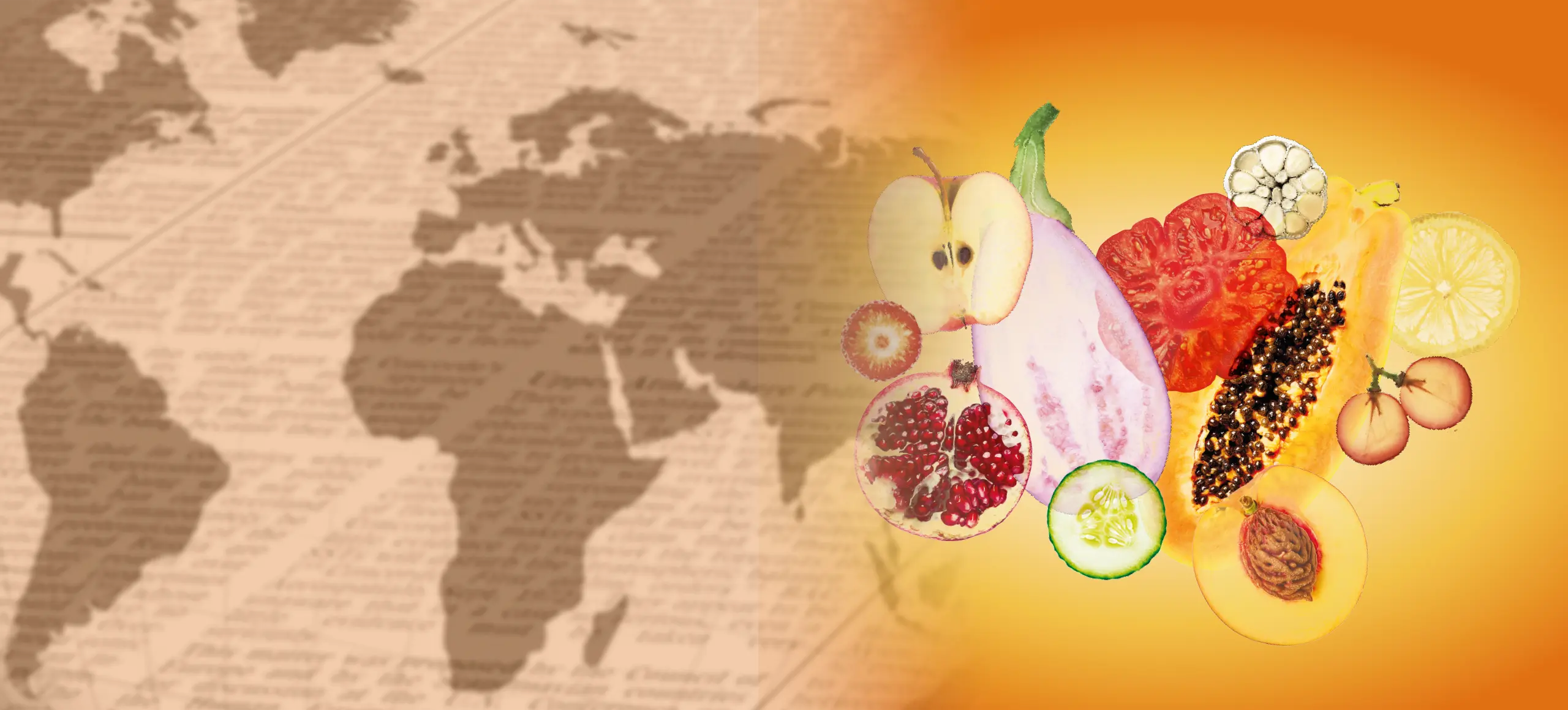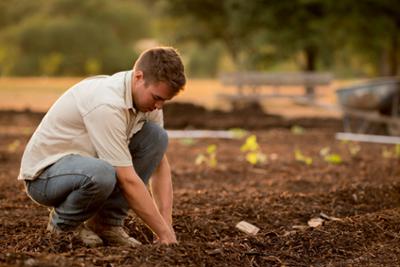

Common Agricultural Policy (CAP): aid and subsidies for the fruit and vegetable sector
Discover what the CAP is, its importance for European farmers, and the main aid and subsidies available for the fruit and vegetable sector.
What is the Common Agricultural Policy (CAP)?
In the words of the European Commission, the CAP (Common Agricultural Policy) focuses on three pillars: food, the environment and the rural environment.
Thus, the CAP is structured in Europe as a partnership between society and agriculture that guarantees a stable food supply, preserves farmers' incomes, protects the environment and maintains the dynamism of rural areas.
Origin and objectives of the CAP: the role of Europe
Since its inception in 1962, the Common Agricultural Policy (CAP) has been adapted to the challenges facing the sector and the changing needs of citizens through successive reforms. The current CAP reform for 2023-2027 establishes a new approach that allows EU Member States to set specific details for the new CAP's interventions through a strategic plan that also serves to achieve the CAP's objectives and the ambition of the European Green Deal.
This means that, for the first time, there is a single plan, the CAP Strategic Plan (CAPSP), which, in the case of Spain, integrates the interventions of the 17 autonomous communities, as well as supra-autonomous measures, financed by the two funds that supply the CAP: the European Agricultural Guarantee Fund (EAGF) and the European Agricultural Fund for Rural Development (EAFRD).
Why is it important for the agricultural sector?
The agricultural sector differs from most other sectors for the following reasons:
Despite the importance of food production, farmers' incomes are around 40% lower than those of workers in other sectors.
Agriculture is more dependent on climate and weather conditions than many other sectors.
There is a time lag between consumer demand and the moment when the farmer can meet it: it takes time, for example, to grow more wheat or produce more milk.
Hence the importance of the CAP for:
Supporting farmers and improving agricultural productivity, ensuring a stable supply of affordable food.
Guaranteeing a reasonable standard of living for farmers in the European Union.
Contribute to the fight against climate change and the sustainable management of natural resources.
Preserve landscapes and rural areas throughout the European Union (EU).
Keep the rural economy alive by boosting employment in agriculture, agri-food industries and related sectors.
Importance of the CAP for the European fruit and vegetable sector
Economic and social impact
he mandatory intervention for Spain under the new PEPAC 23-27 for the fruit and vegetable sector in Spain is set out in Article 43.1 of Regulation 2115/2021. It came into force on 1 January 2023 without a budget ceiling through a Royal Decree regulating the operational programmes for sectoral intervention in fruit and vegetables.
The main beneficiaries of the aid are recognised fruit and vegetable producer organisations (AOPs, OPTs AOPsT).
The main new features of the sectoral intervention are:
• Increased subsidiarity for the Member State.
• Maintenance of the aid system for the operational programmes of fruit and vegetable producer organisations.
• Funding without a budget ceiling and independent of the national envelope.
• Increased environmental obligations:
15% of expenditure on environmental measures.
At least 3 environmental actions.
Need to set water savings in irrigation investments.
• Expenditure on research and development interventions of at least 2% of the operational programme.
Promotion of sustainability in fruit and vegetable production
The new intervention brings greater environmental ambition through changes in aid levels:
Mandatory intervention for Spain under the new PEPAC 23-27 for the sector
- The additional 0.5% for crisis management is maintained and also includes research and development, environmentally friendly techniques, waste reduction, protection of biodiversity and natural resources, pest-resistant production practices, promotion, increased consumption, and risk prevention and management.
• Regarding expenditure (in relation to 50%: up to 80% for the research objective if such expenditure covers 5% of the operational programme and for environmental and social objectives if the expenditure is at least 20%.
Types of CAP support
Direct payments to farmers
The CAP is financed through two funds included in the EU budget:
The European Agricultural Guarantee Fund (EAGF), which provides direct aid and finances market measures.
The European Agricultural Fund for Rural Development (EAFRD), which finances rural development.
The EAGF supports EU farmers through various payment schemes, including a basic payment scheme, a payment for the use of sustainable farming methods (‘direct green payments’) and a payment for young farmers.
The EAGF also finances measures to support and stabilise agricultural markets, including, among others, sectoral aid (wine; fruit and vegetables or olive oil), exceptional measures for market variations and the Community programme for fruit, vegetables and milk in schools.
Rural development and modernisation
According to the European Commission, CAP funding for 2023–2027 is planned to be allocated as follows:
72% to direct payments to farmers
3% to sectoral payments
And 25% to rural development measures, financed by the EAFRD as seen above.
The EAFRD budget for the period 2021-2027 amounts to €95.5 billion, including an injection of €8.1 billion from NextGenerationEU.
EU countries implement EAFRD funding through Rural Development Programmes (RDPs). These have six priorities:
Promoting knowledge transfer and innovation in the agricultural and forestry sectors and in rural areas.
Promoting innovative agricultural technologies and sustainable forest management.
Promoting the organisation of the food chain, animal welfare and risk management in agriculture.
Supporting the transition to a low-carbon and climate-resilient economy.
Restoring, preserving and enhancing ecosystems.
Promoting social inclusion, poverty reduction and economic development in rural areas.
Specific aid for sustainable crops
The new CAP Strategic Plans include the ambitions of the European Green Deal, in particular the Farm to Fork Strategy. Overall, 40% of total CAP expenditure will be devoted to climate action. How? Basically through new voluntary direct payments called eco-schemes.
Eco-schemes are linked to practices related to carbon farming or agroecology, and aim to improve soil structure and increase its carbon content, reduce erosion and desertification, decrease greenhouse gases, and promote biodiversity associated with agricultural areas, landscapes, and the conservation of natural resources.
These are voluntary practices for farmers, and their purpose should be to boost environmental and climate performance in relation to the CAP. Consequently, they should be designed to go beyond the mandatory requirements already prescribed by the cross-compliance system.
The EAGF allocation planned for eco-scheme payments in this period is estimated at 24% of total CAP funding.
How to apply for CAP subsidies?
Requirements for accessing subsidies
Income support must be allocated to active farmers, as defined in REGULATION (EU) 2021/2115 OF THE EUROPEAN PARLIAMENT AND OF THE COUNCIL of 2 December 2021 establishing the strategic plans of the Common Agricultural Policy (CAP), which each Member State must finalise in its own Plan, based on objective criteria, for farmers who are considered active.
Likewise, with regard to the management and control system, as well as equal treatment between potential aid applicants and beneficiaries, there are minimum requirements for receiving direct aid from the CAP and Rural Development measures that must be verified.
The following points must be taken into account for the requirements:
Active farmer
Farm manager
Plots of land available to the applicant
Detailed information on each definition can be found on the EAGF website, here.
Required documentation
The documentation required to apply for CAP subsidies can be found at this link, which is fully up to date.
Challenges and future of the CAP in Europe
Adaptation to climate change
The future of the CAP in Europe has just been outlined in the so-called ‘Vision for Agriculture and Food’, which seeks to simplify agricultural policies and promote innovation and digitalisation in all aspects. The Vision was published by the EC on 19 February.
The Vision outlines four priority areas:
1. An attractive and stable agricultural sector
2. Food security and sovereignty
3. The environment
4. Rural areas
With regard to climate change, the EC is committed to a transition to a low-carbon economy. The Vision recognises the need to reconcile climate action with food security and current challenges. Hence, incentives are recognised for farmers to adopt nature-friendly practices. In this context, the EC will speed up access to biopesticides in the EU market.
The Commission will also develop the ‘Farm Sustainability Compass’ to help farmers measure the performance of their farms, which will be a voluntary assessment system. A water resilience strategy will also be prepared to address the urgent need for more efficient water use.
Digitisation of the European countryside
One of the basic and priority steps in this area is the implementation of the Digital Farming Logbook (CUE). In 2024, the Ministry of Agriculture, Fisheries and Food (MAPA) began the public information procedure for the Royal Decree amending the regulations to establish the voluntary nature of the Digital Farming Logbook (CUE). The new regulation modifies the royal decree that establishes and regulates the Information System on Agricultural and Livestock Farms and Agricultural Production (SIEX) to make the use of this digital logbook voluntary.
The Ministry emphasises that the aim is to collect data on plant protection products and fertilisers in order to further optimise inputs on livestock farms






